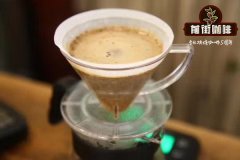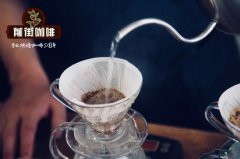Honduras El Plan Coffee Story Pacas Coffee Variety what kind of coffee do you grow in Honduras

Professional coffee knowledge exchange more coffee bean information please follow the coffee workshop (Wechat official account cafe_style)
Farmer: Robert Figueroa
Farm: plan el
Region: El Cedral in Santa Barbara
Process: washing
Variety: pacas
Robert's story is full of resilience and family support. From a poor background, it is impossible for Robert's current reality to supervise three incomparable coffee plantations without sacrificing his family, especially his three six brothers, who left Honduras to work as unlicensed workers in the United States and their talented younger brothers to buy land.
Now his coffee plantation is full of this kind of coffee. Miguel Moreno, one of Roberto's neighbors, is the backbone of all current partners of Coffee Resources in Santa Barbara. In Roberto's words, he is also his role model. Roberto's love of agriculture was the reason why he used his brother's gift to buy land, but he started out as a vegetable farmer. These crops proved difficult and unsustainable, so he saw Miguel successfully shift coffee production from commercial to professional, and Roberto turned to coffee.
Some of the current challenges facing El Plan include leaf rust and Broca's disease, which can seriously damage plants. Future plans for the project include improving the mill and the whole, maintaining the tremendous efforts required to produce high-quality coffee, and obtaining partners in changing markets.
The villages of Cielito, Cedral and Las Flores follow one after another along the Santa Barbara Mountains. Growing on this hillside are mainly Pacas, a coffee variety similar to bourbon, as well as yellow Cataui and Pacamara. It is challenging to process coffee fruit in such a place close to the jungle because it is easy to rain. Especially in the drying process, the requirement is very high. However, when these processes are precisely controlled, seemingly problematic factors (such as drying under challenging conditions) make coffee in the region particularly interesting. The coffee produced here has a unique taste and can't be found anywhere else in Central America.
This is our second year of roasting Roberto's coffee, and we are happy to taste it again.
END
Important Notice :
前街咖啡 FrontStreet Coffee has moved to new addredd:
FrontStreet Coffee Address: 315,Donghua East Road,GuangZhou
Tel:020 38364473
- Prev

Ethiopian Coffee washing Station recommends Gucci Coffee washing Station to introduce the flavor description of Gusai Coffee
For more information about coffee beans, please follow the Coffee Workshop (Wechat official account cafe_style) Water washing Station: Deri-Teshome-Gemechu area: Guji process: fully washed varieties: Ethiopian heirloom flavors: honey, drupes, roses Ethiopian coffee is usually purchased through the Ethiopian Coffee Exchange (ECX). In the past, ECX has been proven
- Next

Where are Burundian coffee beans? do Burundian coffee beans taste good by hand? Burundian coffee
More information about coffee beans Please follow Coffee Workshop (Wechat cafe_style) Long Miles BURUNDI Mutana 104-Natural producer: mile long Coffee area: Heza process: natural breeds: red bourbon Coffee from Mutana is a good reason to get up in the morning. At its best, it is full of fresh red berries
Related
- Beginners will see the "Coffee pull flower" guide!
- What is the difference between ice blog purified milk and ordinary milk coffee?
- Why is the Philippines the largest producer of crops in Liberia?
- For coffee extraction, should the fine powder be retained?
- How does extracted espresso fill pressed powder? How much strength does it take to press the powder?
- How to make jasmine cold extract coffee? Is the jasmine + latte good?
- Will this little toy really make the coffee taste better? How does Lily Drip affect coffee extraction?
- Will the action of slapping the filter cup also affect coffee extraction?
- What's the difference between powder-to-water ratio and powder-to-liquid ratio?
- What is the Ethiopian local species? What does it have to do with Heirloom native species?

